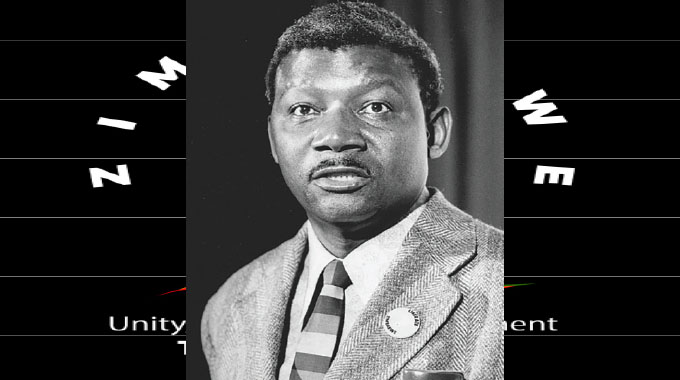Nyathi book chronicles Pupu battle

Nqobile Tshili, [email protected]
RENOWNED historian, Mr Pathisa Nyathi has penned a book titled Battle of Pupu and Beyond, detailing how the Ndebele warriors under General Mtshane Khumalo outsmarted British mercenary soldiers during the 1893 Pupu Battle, foiling their attempt to capture King Lobengula.
In the book titled the Battle of Pupu and Beyond, Mr Nyathi writes that while the Ndebele warriors were armed with spears and assegais, they also had rifles from several trade treaties.
They also had the advantage of spying on their enemies and strategically deploying forces to take advantage of rain and a raging flood in the Shangani River.
President Mnangagwa is expected to commission the Pupu Memorial Site and National Monument tomorrow, to correct the country’s distorted history that failed to acknowledge the bravery and sacrifices of indigenous Africans.
The book comes at a time the country is building momentum towards celebrating its 44th Independence anniversary next month.
Mr Nyathi details in his book how Gen Mtshane and his troops initiated an attack on the enemy deployed by Cecil John Rhodes to capture King Lobengula.
After learning that his warriors had been defeated at what has become known as the Gadade Battle where the British South Africa Company decimated the Ndebele warriors, including the powerful Insukamini Regiment using the newly manufactured Maxim gun, King Lobengula ordered one of his senior chiefs, Sivalo Mahlangu, to burn the palace in line with Ndebele military traditions.
The King moved northwards, but Rhodes wanted to capture him and deployed a team led by Major Patrick Forbes flanked by Major Allan Wilson to execute the delicate task.
Mr Nyathi writes that as the imagination to capture the King became real, the British troopers threw caution to the wind, forgetting that the Ndebele warriors were not completely defeated.
He writes that rain was pounding extensively while Wilson’s men were getting weary and running out of supplies, and the night was approaching.
“In their minds, the glory of capturing King Lobengula was worth all the risk. Further, the military strength of only 160 men was inadequate. The wagons were few to make effective defensive laagers,” writes the historian.
He said after meeting some Ndebele people while pursuing the King, the mercenaries believed they were about to capture the king, not knowing that he was far ahead.
He writes that while the whites were plotting how to attack, Gen Mtshane already had an idea of how they had composed themselves as it was part of the Ndebele military strategies to spy on their enemies.
“More strategically, Mtshane deployed another force, comprising Insukamini and Hlathi on the northern bank of the Shangani River directly opposite Major Forbes’ forces. Should Major Forbes seek to get his reinforcement forces across the river, they were most vulnerable at the crossing point. More so, it was at night and the Shangani River was a raging flood,” he writes.
“Commander Mtshane himself led the cream from both Imbizo and Ingubo regiments further on to the zone of maximum threat, where the King was together with the Wilson Patrol, which was poised to launch an attack at dawn.”
Mr Nyathi writes that as the attack ensued, the King was further on and the Wilson Patrol had to be cut off to ensure it did not pose some threat to the monarch.
“It was a do-or-die situation and the fate of the King was at stake. Mtshane and his forces plus other Ndebele forces already close to the royal wagons, remained there close to the Wilson Patrol.
“This was to be the scene of the epic battle at dawn. The Ndebele, as part of military tradition, administered some herbal concoctions that improved night vision,” writes Mr Nyathi.
“Milk from cows with mature calves was an ingredient in the concoction. After strategically abandoning the royal wagons, the King, in the company of two chiefs, one of whom was most likely Magwegwe Fuyana, rode ahead. That meant he was in a position to move more swiftly away from danger and impending doom.”
He said Wilson and his men fought in futility as the Ndebele warriors surged towards them until one white soldier was left.
“When they got to the Major Forbes Party, they expressed a situation of doom and gloom. ‘It’s all over. We are the last of that party!’ These words came out of Senut Burnham.
“As the Ndebele pressed on and maintained the fire, they managed to encircle the patrol, which had now made a barrier ring out of fallen horses. Among the forces that were part of the deadly circle were the vengeful soldiers from Imbizo and Insukamini regiments who had engaged the enemy earlier on in the war,” he wrote.
Mr Nyathi further noted that as the battle raged on, General Mtshane continued to lead from the front, with Mdilizelwa Fuyane, killing the last man standing, Allan Wilson.
“A member of the Imbizo Regiment, Mdilizelwa Fuyana, son of Maphisa the chief of Isizinda Village, performed the final military act! The last standing man was, according to Ndebele oral traditions, commander of the Patrol, Major Allan Wilson,” writes Mr Nyathi.
Wilson and his 33 men fell to the Ndebele warriors, who ensured the King was not captured.
Following the battle, Rhodes created a monument for the defeated men at Pupu, celebrating what he called their bravery.
However, the Second Republic has reconstructed the Pupu Monument to celebrate the heroic Ndebele warriors who became a symbol of resistance and inspiration to future generations that colonialists can be defeated regardless of their superior fire power. — @nqotshili











Comments